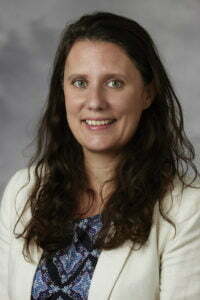Dying Young in the United States
IAPHS Staff
Recently, a team of IAPHS members published an important PRB population bulletin on early life mortality, Dying Young in the U.S.: What’s Driving High Death Rates among Americans under Age 25 and What Can be Done about It? The IAPHS blog team spoke with study author Elizabeth Lawrence to highlight some of their key findings and to suggest some great ideas for future researchers.
What do you think is the most important finding?
The big takeaway for me is that in the United States, death early in life is too common. When children and youth die, we tend to think of these losses as “freak accidents.” To any family experiencing such a tragedy, the death is senseless and unpreventable. But when we look at the broader patterns, the U.S. has the highest death rates for all ages under 25 compared to all other similar high-income countries. We can do better! There are ways to reduce risk and lower mortality rates.
What was the most surprising finding?
Although I am accustomed to seeing strong social patterns in health outcomes, it somehow still surprised me that there are such robust disparities in early-life mortality! We found consistent and fairly large differences across socioeconomic status and race/ethnicity. Children in families living below the poverty line or whose parents have education below a high school diploma face greater risk of death compared to their advantaged peers. The differences in infant mortality across race are shocking, as the most socioeconomically advantaged Black mothers lose their babies at higher rates than the most disadvantaged White mothers. We also find differences across sex/gender, family structure, and geographic regions. I expected there would be some differences, but it is just always amazing when you see how the results really show complex social processes.
What aspects of this work do you think IAPHS researchers should focus on to either bring more attention or to, develop more research, or to build more policies on?
IAPHS researchers are leading the way in developing upstream approaches to improving population health. By upstream, I mean thinking about and directly addressing key social factors that may not always seem directly related to health, like unemployment benefits or educational opportunities. This kind of perspective is useful for understanding disparities in early life mortality, because it can connect broader social factors to these real outcomes. For example, wealthy families may benefit from using the best child car seats that are compatible with their newer-model, safer family cars and rarely transfer their car seats between cars. I think drawing connections between these social factors and their consequences can help us to decide what our priorities as a society should be.
What policies or supports could address some of the big differences by family status (i.e., multigenerational families)? Can you comment on some of the potential pathways beyond income and education?
Family structure is challenging to study, because it is sometimes the result of resources and it is sometimes the cause of resources. Extended family members may live together because of financial strain, but a couple with both parents working full-time will have two incomes. And it’s not all about money! Families take care of one another, help with household chores, and provide emotional support. Quite a bit of the differences across family status were due to income and education, but some differences persisted. Youth in multigenerational families had higher mortality risk, which could be because multigenerational families put greater caregiving burdens on parents, but we weren’t able to eliminate the possibility that there are other circumstances that lead to both multigenerational families and higher mortality risk. Nonetheless, policies focused on additional caregiver supports would have many benefits for children and families.
What did you find most challenging about doing this research?
This kind of research has many of the same challenges that all population health research faces. We are limited to available data and measures, causality is difficult to prove, and longitudinal data can be complicated to work with. In terms of specific challenges for this project, I think the biggest issue is limited statistical power, since (fortunately) relatively few children and youth die.
What do you see as the role of advocacy in doing this type of research?
This type of research gives us information that can be used to advocate for a wide range of policies and positions. Sometimes as researchers, we lose sight of the forest because we get so focused on our specific research paper “trees.” I think this project is a good example of how a broad, forest-level view of early-life mortality can offer an informed perspective that considers nuance and complexity but also keeps in mind the bigger picture.
Any advice for new scholars interested in this area?
New scholars should feel encouraged to take on this important topic! There is so much we don’t know! I think there is a lot of low-hanging fruit for this topic, especially looking at policies in counties or states and how they relate to early-life mortality rates. Variation across time and place for policies like traffic laws or gun safety provide a great opportunity for upstream research on early-life mortality.
Citation: Rogers, Richard G., Robert A. Hummer, Elizabeth M. Lawrence, Trent Davidson, and Samuel H. Fishman. 2022. “Dying Young in the U.S.: What’s Driving High Death rates among Americans under age 25 and What Can be Done about it?” Population Bulletin 76(2).
 Dr. Elizabeth Lawrence is an Assistant Professor in the Department of Sociology at the University of Nevada, Las Vegas.
Dr. Elizabeth Lawrence is an Assistant Professor in the Department of Sociology at the University of Nevada, Las Vegas.






All comments will be reviewed and posted if substantive and of general interest to IAPHS readers.